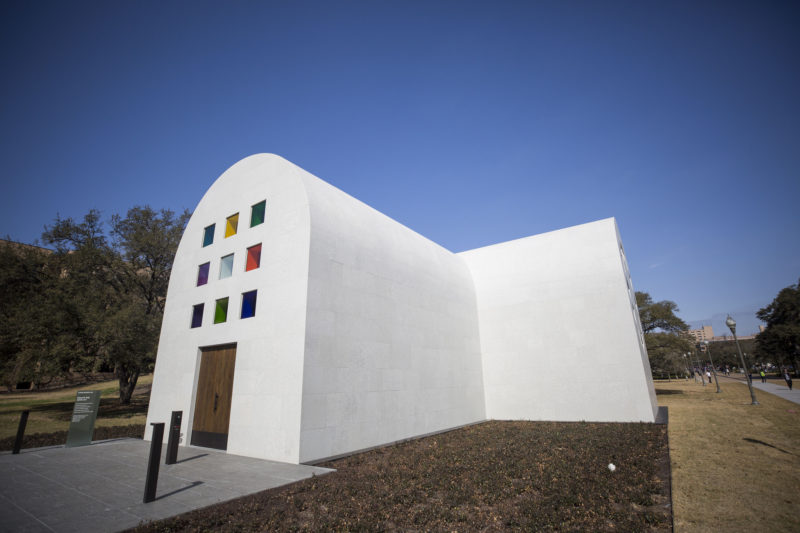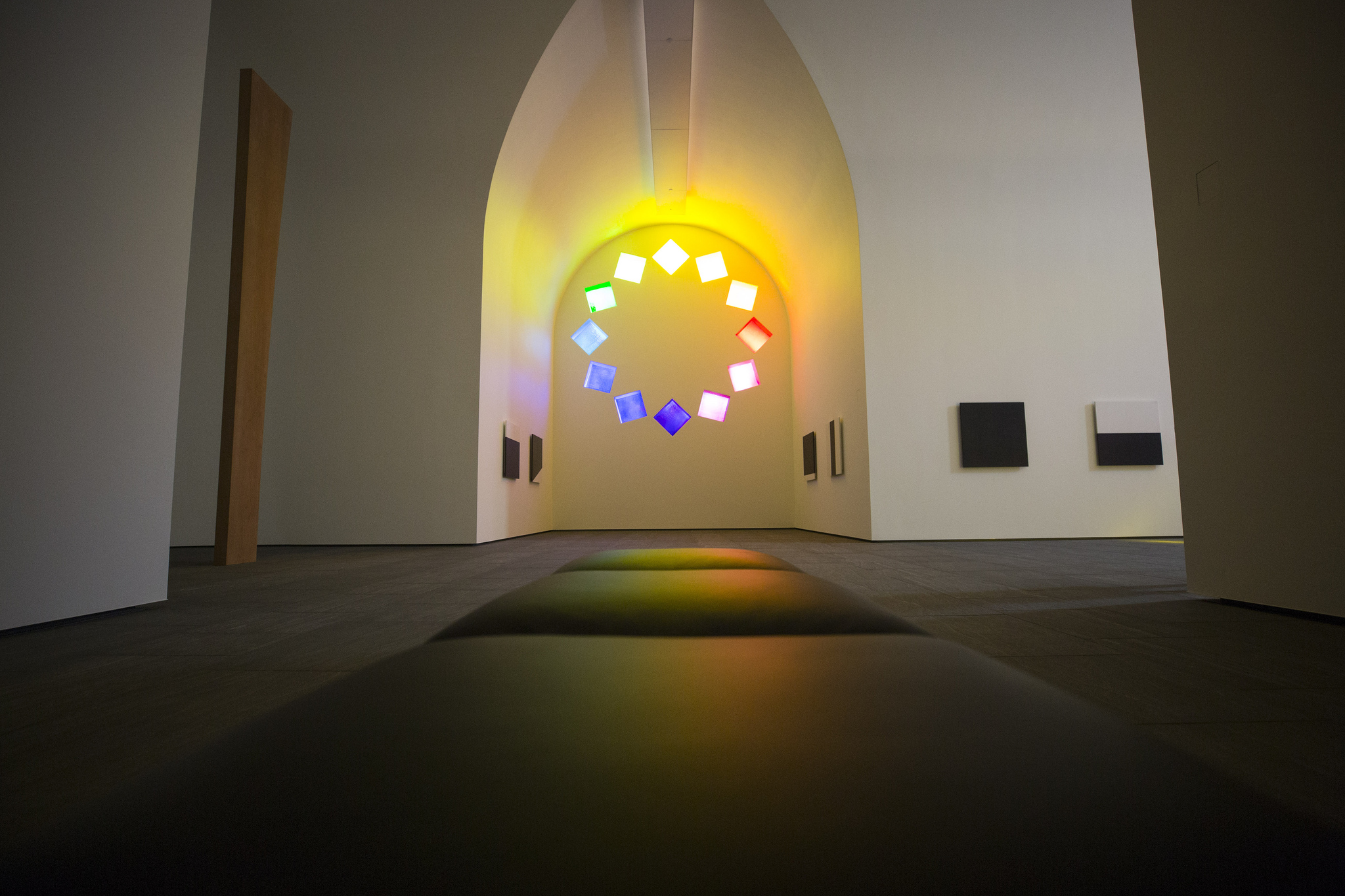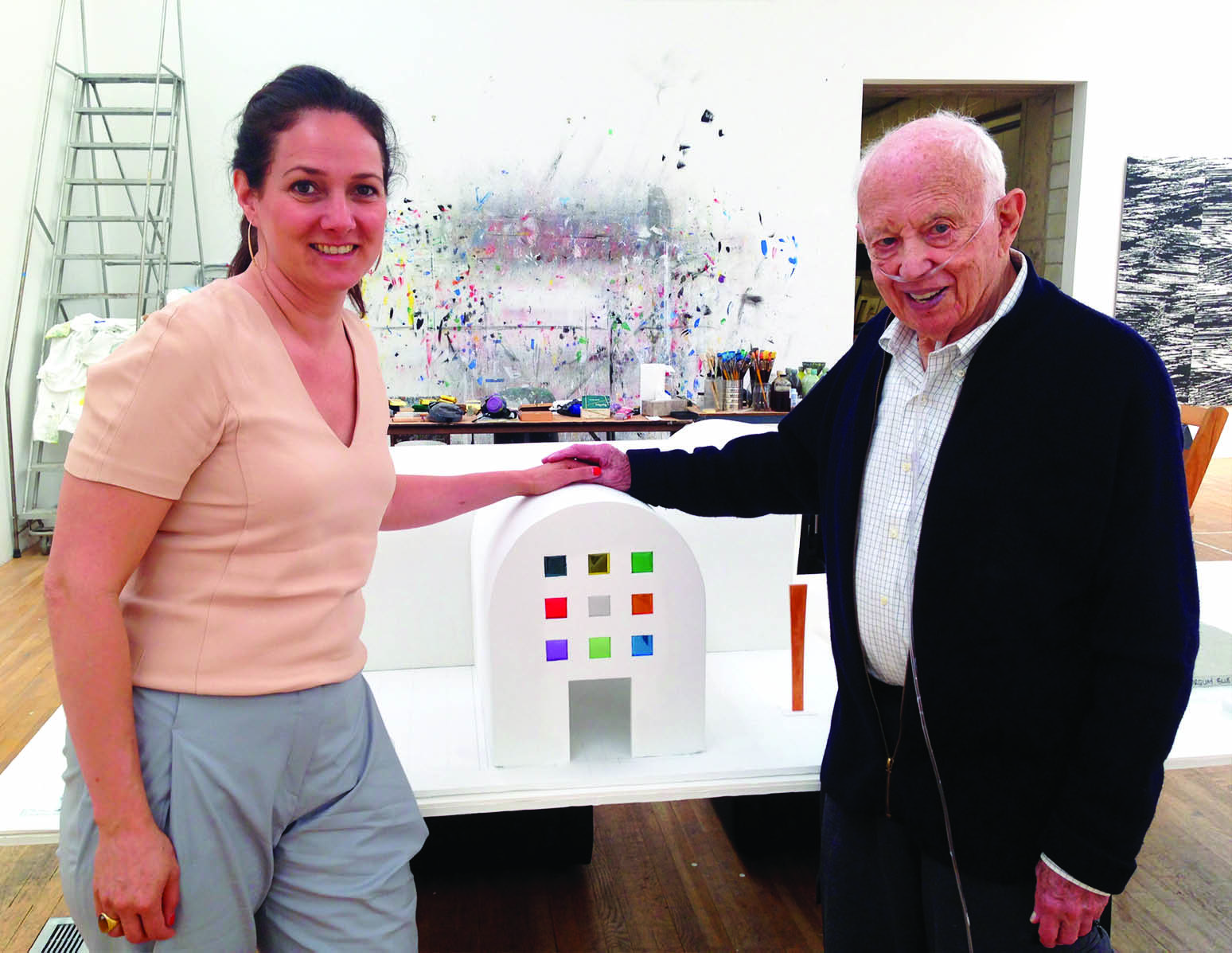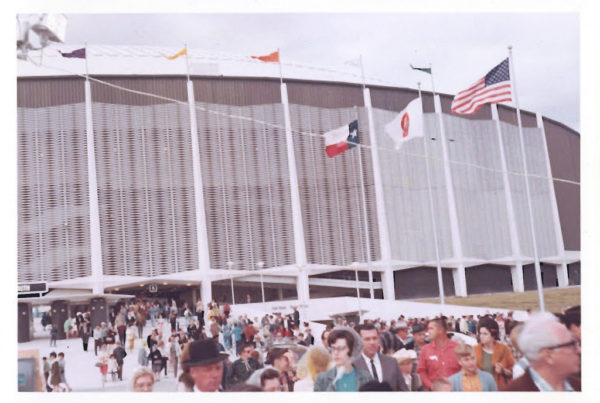A new building opens to the public this weekend on the University of Texas at Austin campus. It doesn’t have desks, books, or basketball hoops inside. In fact, it’s empty except for a couple of benches placed there for admiring the art on the walls, on the windows – and, well, the building itself is a piece of art. It’s not very big but its igloo-like structure and tall ceilings give it the echo of a large sanctuary.
“The beauty to me about the light is that all three windows have equal brightness and the colors all look really jewel-like,” says Simone Jamille Wicha, the director of the Blanton Museum of Art.
It’s also very church-like inside, with a tall wooden totem on one side and colorful windows letting in light on the three others.
“So at the age of 90 he goes through the process with us of creating these windows in his spectrum,” Wicha says. “And it’s the very first time he’s working in glass and these are the only Kelly windows in the world, that are here now in Austin.”
Wicha led the effort to bring this building designed by artist Ellsworth Kelly to life in Austin. The building itself – this work of art – was in the process named “Austin” but she says it was originally designed in 1987 for a patron in California.
“It never happened,” she says. “And it’s a project that sat in Ellsworth’s studio and in Ellsworth’s mind for many decades, three decades. And it doesn’t find a home until we begin a conversation with him and we started to build a relationship with Ellsworth.”
That’s when the Blanton Museum of Art began the ambitious undertaking.
“It is monumental because Ellsworth Kelly is one of the most important artists of modern times. He is a giant,” she says. “But it’s a construction project. This is going into a whole new realm of building something that needs to be exact for the artist.”
Wicha says the work was a big risk that required mutual trust between the artist and the museum.
“I feel very comfortable crediting this museum with being partners, and it took a great deal of trust,” she says. “It took them trusting us that we were going to do the right thing. I feel like what you need to do is just stand behind an artist and allow them to do their best work. And they’re taking risks, not knowing what it’ll be until the very end. I mean obviously he had a vision for it and he saw it, but exactly the kind of feeling or the kind of scale and understanding how those windows would work exactly, you don’t know until you’re in there. We’re still learning about how it works in different sunlight, different times of year. As the year goes on, we’ll learn about it.”
She says Austin influences made their way into the building, like for instance the front door is an Austin live oak tree.
“It’s kind of the culmination of his career,” she says. “And there is something just beautifully poetic that it has a bit of Texas in it, and Ellsworth liked that.”
The original concept in California was supposed to be made of white stucco, but once the project moved to Texas it became limestone. She says that Kelly felt tired of making art to hang on walls, and instead he wanted the walls themselves to become art.
“I think it’s his masterpiece,” she says. “I think it’s a masterpiece.”
Ellsworth Kelly died at the age of 92, while the project was still underway.
“I don’t know if one thing relates to the other, but we had just finished going through all the design with him, completely,” Wicha says. “Because I realized, we all realized, that we were working with limited time.”
Wicha says that Austin now has one of the great masterpieces in the world, making the city a true destination for visual arts.
Written by Jen Rice.



















